who the fuck is schmitt and why he triggered???
Schmitt Triggers are comparators with positive feedback, such that it makes the output “stick to one extreme or the other”.
Inverting Schmitt Trigger
Let’s say we have an inverting Schmitt trigger like this:
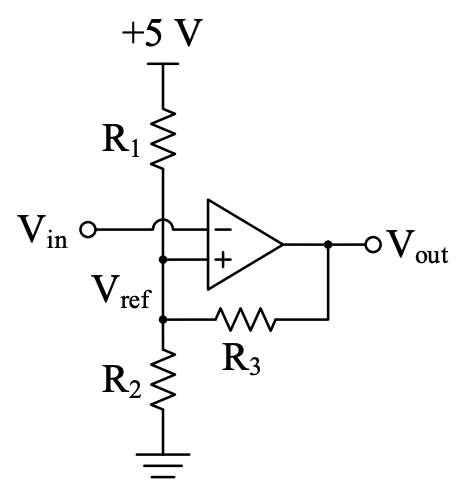
Without , this is just a comparator. All we’re doing is generating with a voltage divider. So first, we will ignore , which makes it just a comparator with:
This also means that would give . This is a comparator in an inverting or “less than” configuration, shown below.
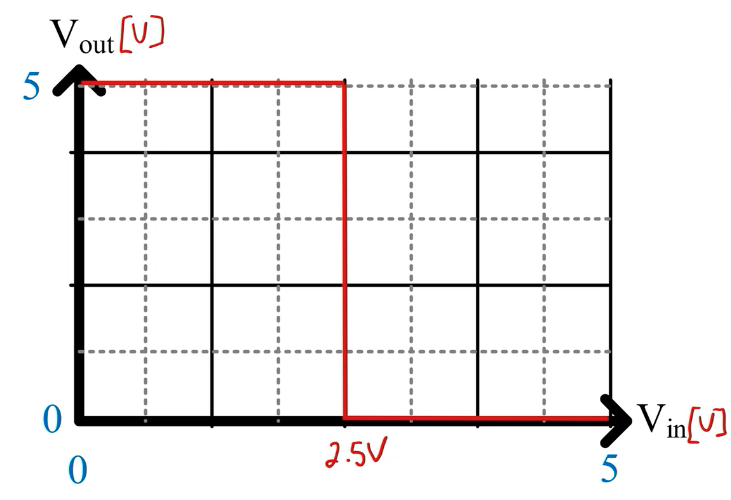
Since this is positive feedback, we want it to be more difficult to go snap away from a given state (fridge door magnet analogy). Note how the blue lines in the diagram below both go further before switching states:
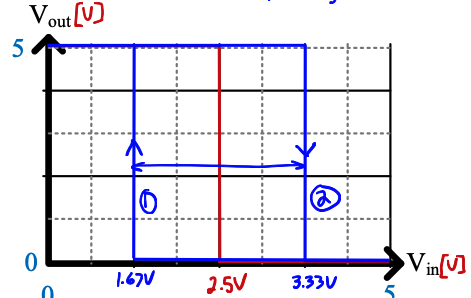
This “stickiness” is called hysteresis, which makes systems less sensitive in general by reducing noisiness (“bouncing”) at the state transition between 0 and 1. Thus, the action done by a Schmitt trigger is sometimes called “debouncing”.
At the circuit level, this is happening by changing using based on the output. There are two cases:
Case 1:
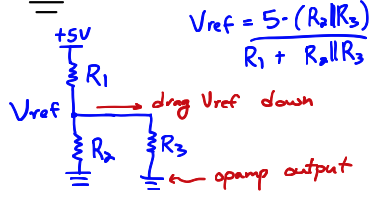
Note how is connected to the output of the op-amp. Since the output is , is basically connected to ground. This drags down.
Case 2:

Once again, is connected to the op-amp output, which is 5V this time. This changes the configuration of the voltage divider in the circuit, giving:
This pushes up.
We can control the width of the hysteresis by changing ; as goes down, the amount of hysteresis goes up.
Example
See Schmitt Trigger Example for an example of an inverting Schmitt Trigger.
Non-inverting Schmitt Trigger
A non-inverting Schmitt Trigger “drags” up or down instead of , as the non-inverting case does. It forms a voltage divider to or (equivalent to ), so has to work extra hard to exceed .
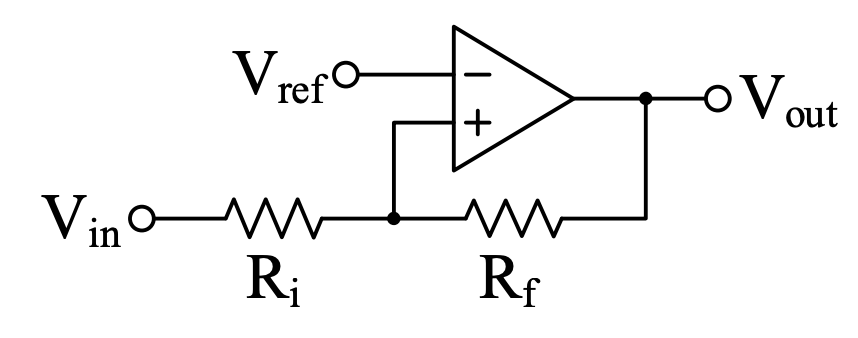
Governing equations:
Below is the graph of non-inverting Schmitt Trigger transitions. The transition happens right when for both cases (think in terms of basic op-amp terms).

Example
Let’s say we have and want:
Then, we would have: